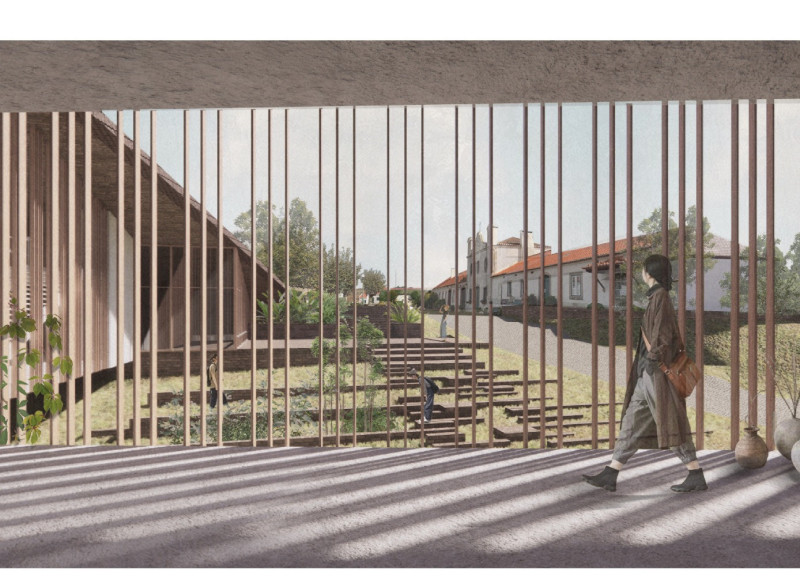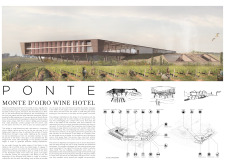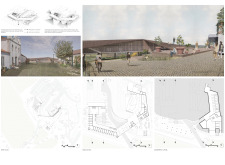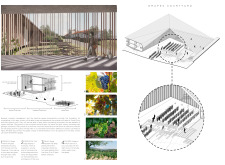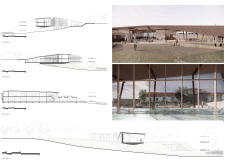5 key facts about this project
This project represents a sophisticated approach to designing a space that fosters connection—between guests and their surroundings, and between the act of relaxation and the agricultural heritage of the area. The hotel is strategically positioned among vineyards, allowing visitors to have unobstructed views that enhance their appreciation of the landscape. Such positioning reinforces the concept that the hotel is not merely a place to stay, but rather an integral part of the viticultural experience.
Functionally, Monte d’Oiro accommodates various guests' needs through well-considered spaces that encourage interaction and enjoyment. Guest rooms are designed to provide comfortable retreats, oriented to capture natural light and capitalize on the picturesque views over the vineyards. This design choice establishes a strong connection between the interior spaces and the natural environment outside. The layout includes communal areas such as lounges and dining spaces that promote social interaction, making it possible for guests to connect with one another and share experiences related to their visit.
One distinctive aspect of the Monte d’Oiro Wine Hotel is its incorporation of outdoor spaces that engage with the surrounding landscape. Circulation paths and terraces encourage guests to explore the winery, vineyards, and natural features in the vicinity. These thoughtful design elements facilitate an active engagement with the environment, inviting visitors to appreciate the agricultural practices firsthand while revisiting the hotel's offerings in a relaxed setting.
From a design perspective, the project employs a range of materials that enhance its architectural integrity and reflect a modern aesthetic. Key materials include wood, which brings warmth to living spaces; reinforced concrete for structural elements; and expansive glass panels that foster transparency and a direct dialogue with the outdoor landscape. Stone pavers are used in the outdoor areas to ensure a seamless transition between the built environment and the natural surroundings. Metal accents lend a contemporary touch to the overall façade, complementing the traditional aspects of the region's architecture.
The architectural design of Monte d’Oiro is a steps forward in creating spaces that enhance the experience of visitors through careful planning and material choices. It stands as an embodiment of sustainability by integrating practices that minimize environmental impact and promote natural beauty. The interplay between architecture and landscape fosters a sense of tranquility while enriching the experience of luxury accommodation.
This project represents a unique opportunity for visitors interested in wine culture and hospitality to deepen their understanding of the local viticulture. The Monte d’Oiro Wine Hotel serves as an invaluable source of engagement with the land, showcasing the importance of wines in Alentejo’s cultural identity. To gain deeper insights into this thoughtful architectural endeavor, consider exploring the associated architectural plans, sections, designs, and ideas that highlight the meticulous attention to detail found throughout the project.


